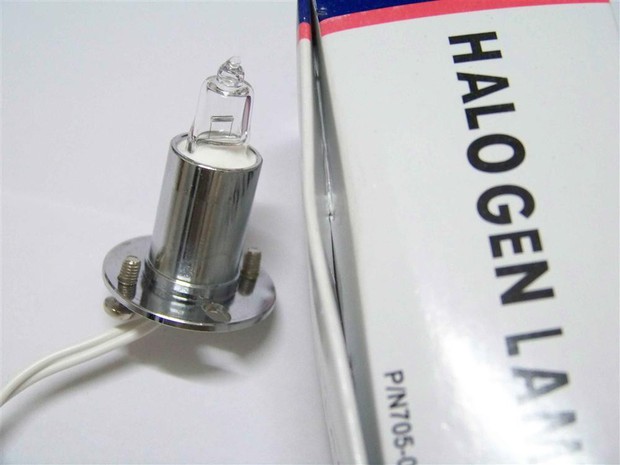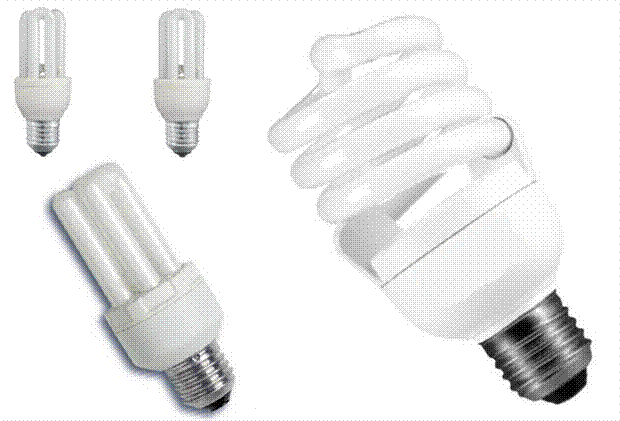In every household nowadays, alongside electronic appliances that support human life, the presence of light bulbs cannot be ignored. With the purpose of illuminating spaces, each household usually has multiple light bulbs in various forms, equipped in many areas. These can include rooms, hallways, staircases, or gardens.
Due to the large number of light bulbs in each household, it is crucial to choose energy-saving light bulbs. It can directly affect the “wallet” of consumers. Currently, the most popular types of light bulbs on the market are LED bulbs, Halogen bulbs, compact CFL bulbs, and incandescent bulbs. So which type of light bulb is the most energy-saving, and which one consumes the most energy?
Comparison table provided by experts
To provide the most accurate answer to the question of which is the most energy-saving light bulb and which is the most energy-consuming light bulb, experts have conducted research based on the operating efficiency accompanied by energy consumption. From there, they have created a detailed comparison table for users to easily imagine and refer to.
You can refer to the table below. The experts have measured the energy consumption of the light bulbs at 5 levels of brightness and obtained specific energy consumption figures. It can be seen that the light bulb with the highest energy consumption is the incandescent bulb, as this type consumes 25W of electricity at the lowest brightness level of 220+ and 100W at the highest brightness level of 1300+. On the other hand, the light bulb with the lowest energy consumption, which also means the most energy-saving, is the LED bulb. The LED bulb consumes only 3W at the brightness level of 220+ and 70W at the brightness level of 1300+.

A comparison table of electricity consumption of different types of light bulbs at different brightness levels
Overall, LED bulbs save up to about 80% compared to incandescent bulbs. In addition, the other two types of light bulbs mentioned in this comparison are Halogen bulbs and compact CFL bulbs. The CFL bulb ranks second in terms of energy-saving, while the Halogen bulb ranks third.
Another study published on Lumennow.org also indicates that LED bulbs and compact CFL bulbs are the two most energy-saving light bulbs and have similar energy consumption figures. They are followed by Halogen bulbs and incandescent bulbs.

Another comparison table published on Lumennow.org shows similar results. Incandescent bulbs consume the most electricity, while LED bulbs are the most energy-saving
Understanding different types of light bulbs
To distinguish and accurately choose the appropriate type of light bulb for individual needs, users need to know some basic information about them.
1. Incandescent bulbs
Incandescent bulbs are considered the most original and oldest type of light bulb. They operate based on the principle of using alternating current to heat the tungsten filament until the light is emitted.
Also due to this principle, incandescent bulbs become extremely hot when turned on, so touching them can cause burns. They also generate heat from 93-94%, resulting in high energy consumption, approximately 6-8% for the light emission of the bulb.
The advantage of incandescent bulbs is that they have a color rendering index (CRI) close to 100, which helps colors in the space appear vivid and truest. The cost of incandescent bulbs is also considered cheaper than other types of light bulbs. However, its disadvantage is that after prolonged use, users may feel uncomfortable or experience eye strain.

Incandescent bulbs are the oldest type of light bulb (Illustrative image)
Other disadvantages of incandescent bulbs, as pointed out by experts, include a low lifespan (reaching optimal efficiency for a maximum of 1000 hours, equivalent to more than 1 month continuously); producing a large amount of CO2, which is not environmentally friendly; or emitting a small amount of ultraviolet and infrared rays when the light is on, somewhat affecting the skin. That’s why incandescent bulbs are now recommended to be used to a limited extent.
2. Halogen bulbs
Halogen bulbs are considered to have many similarities with incandescent bulbs. They are similar in structure and color rendering index. The difference of Halogen bulbs lies in the fact that this type of bulb has the addition of a small amount of halogen gas to the filament. This is also considered a slight improvement over the filament bulb.
However, Halogen bulbs still save only a little compared to filament bulbs.

Halogen bulbs are quite similar to incandescent bulbs (Illustrative image)
3. Compact CFL bulbs, fluorescent bulbs
To put it simply, compact CFL bulbs are a smaller power version of fluorescent lamps. They are constructed by U-shaped glass tubes. Each bulb can be a 1U, 2U, or 3U tube, or it can be a mini-twist tube, which is almost the same size as a filament bulb.
The name “compact” also comes from its small, compact shape. In addition, many people also call compact CFL bulbs U-shaped bulbs or twisted bulbs.
Experts evaluate that the efficiency, as well as the lifespan and energy-saving ability of compact CFL bulbs, are much better than incandescent bulbs. Moreover, this type of bulb minimizes flickering caused by being equipped with electronic ballasts. However, compact CFL bulbs are prone to damage when the power supply is unstable. Therefore, the Ho Chi Minh City Department of Science and Technology recommends that users limit the number of times they switch the bulbs on and off to avoid incidents with the bulbs.

Compact CFL bulbs are also called U-shaped bulbs or twisted bulbs (Illustrative image)
A higher-power version of compact CFL bulbs is fluorescent bulbs. The higher power helps illuminate better, and the lifespan is also higher, averaging about 8000 hours. However, in terms of energy-saving, fluorescent bulbs still rank behind LED bulbs.
4. LED bulbs
The best choice for energy-saving and longest lifespan light bulbs is LED bulbs. They are also considered the most advanced lighting devices.
LED in the name LED bulbs is an abbreviation of the phrase Light-Emitting-Diode, meaning light-emitting diodes. The components of the bulb can include LED chips – these are the parts that produce light; circuit boards – the parts for mounting the LED chips; power supplies; and the bulb housing.
LED bulbs operate by using LED chips to emit light through semiconductor technology. The Gelighting.com website comments that it is also because of this that LED bulbs require less energy to produce high brightness at low operating temperatures.

LED bulbs operate by using LED chips (Illustrative image)
In addition to the advantages of energy saving, the lifespan of LED bulbs is also considered the highest, averaging 25,000 hours, and even up to 50,000 – 90,000 hours. “If an LED bulb is turned on 24/7, then you only need to replace your bulb every 15 years,” Gelighting adds.
Naturally, with these outstanding advantages, the cost of LED bulbs is usually higher than that of all other types of bulbs.
The choice of which type of light bulb for each household is still the choice of each user, based on their conditions and personal needs. Please consider the advantages and disadvantages of each device carefully to make the most appropriate choice.
According to Phụ Nữ Số (Women’s Magazine)





































